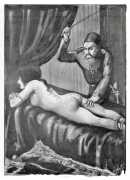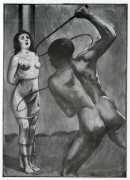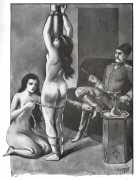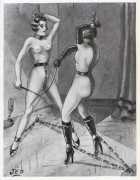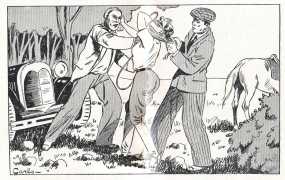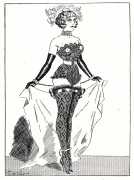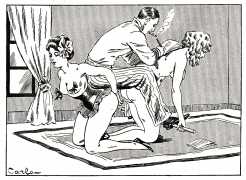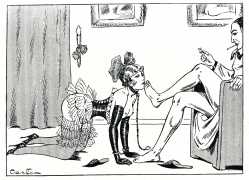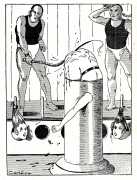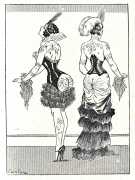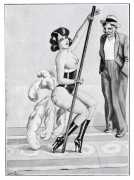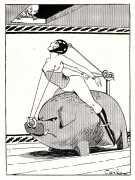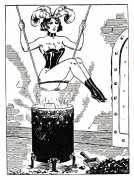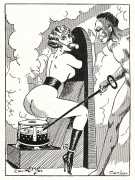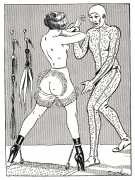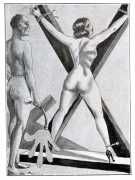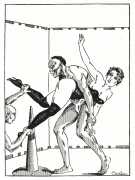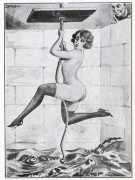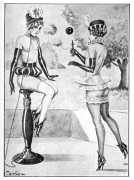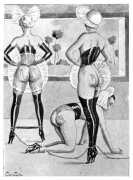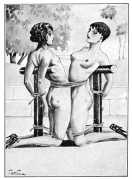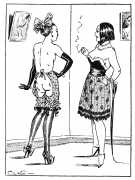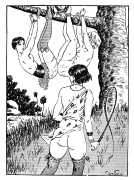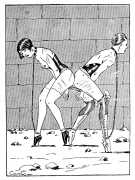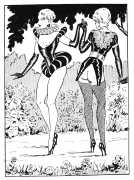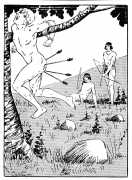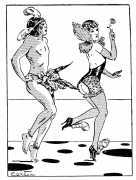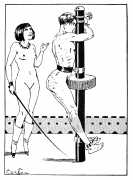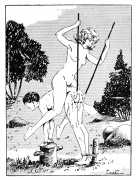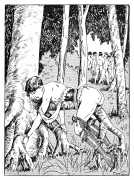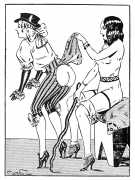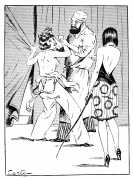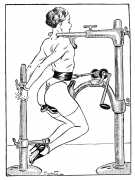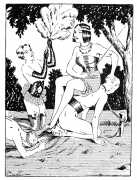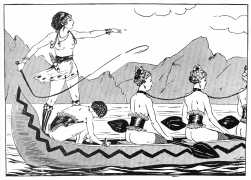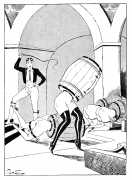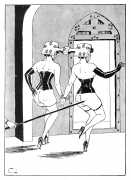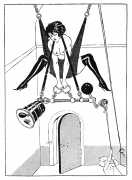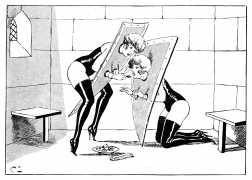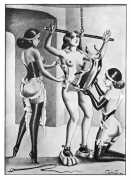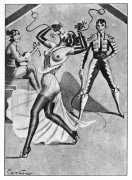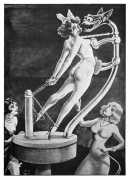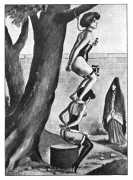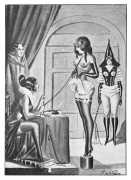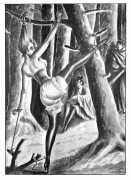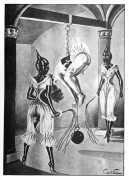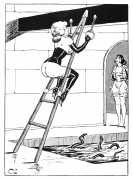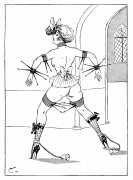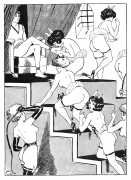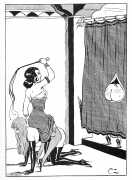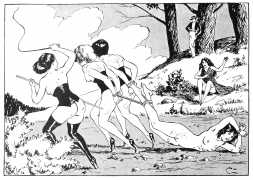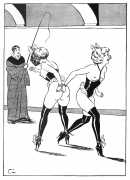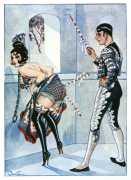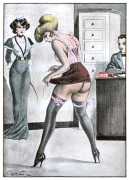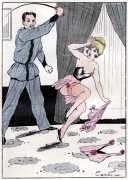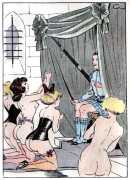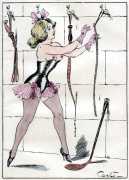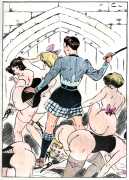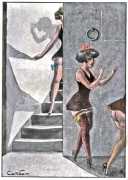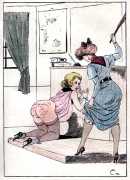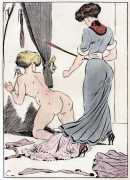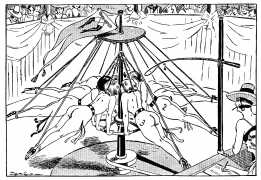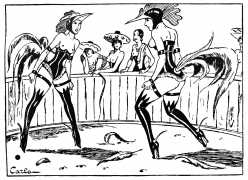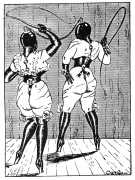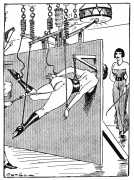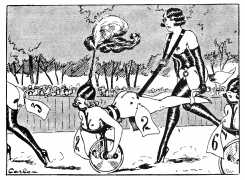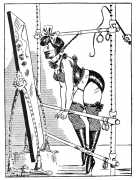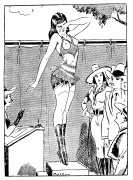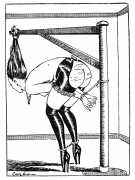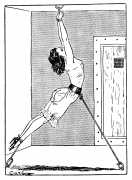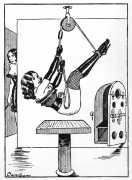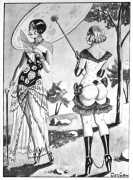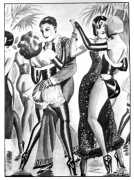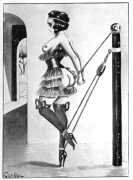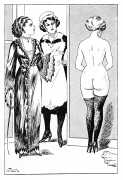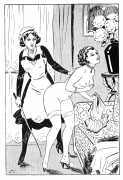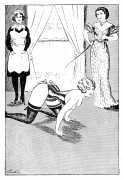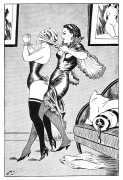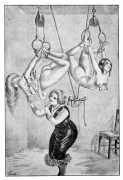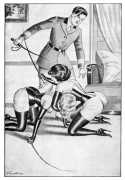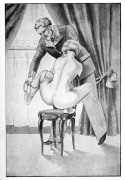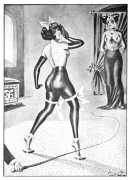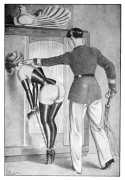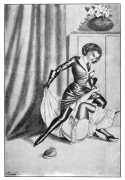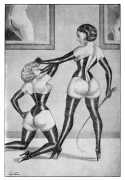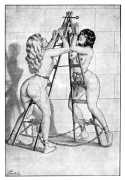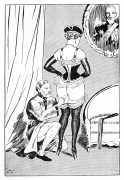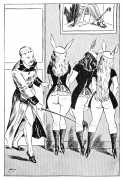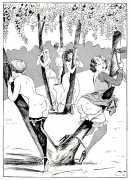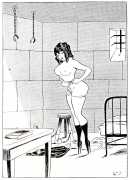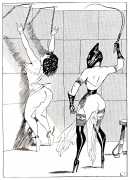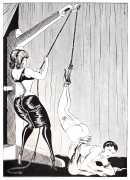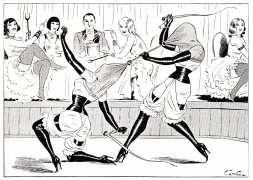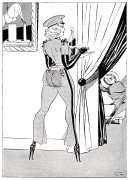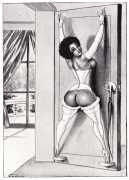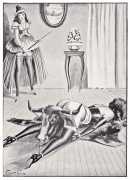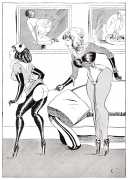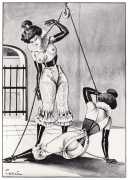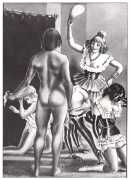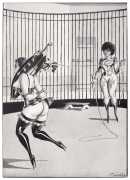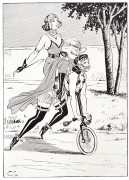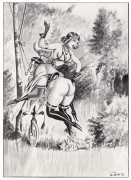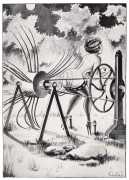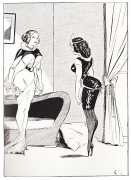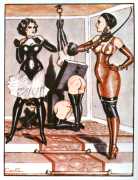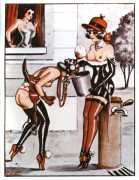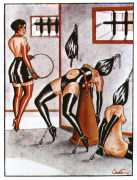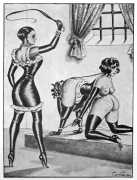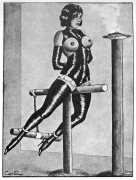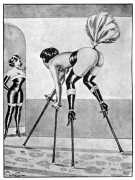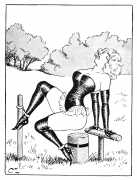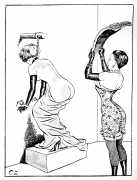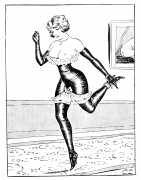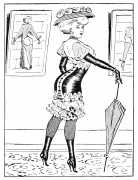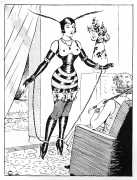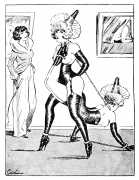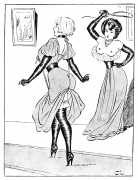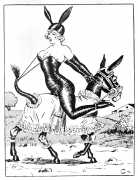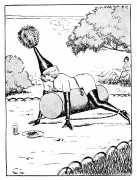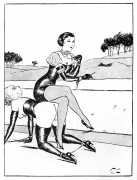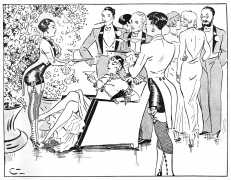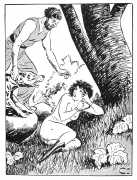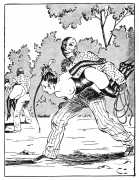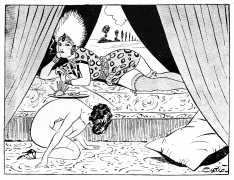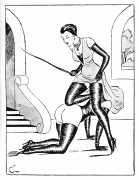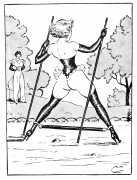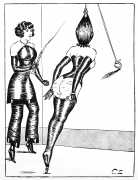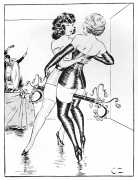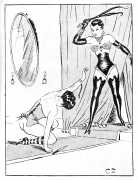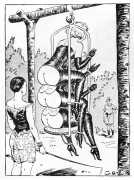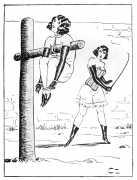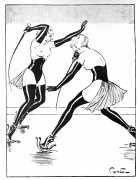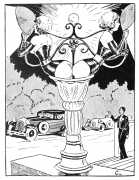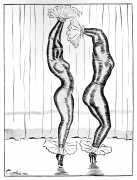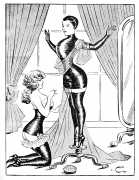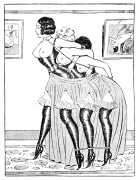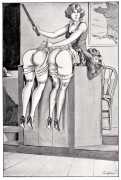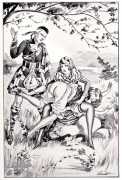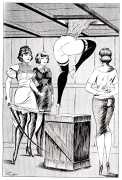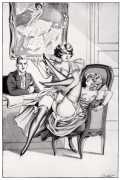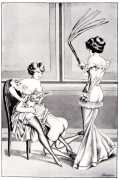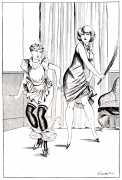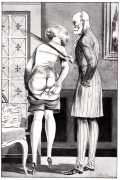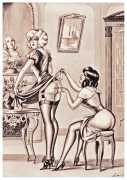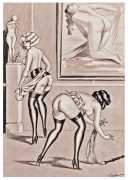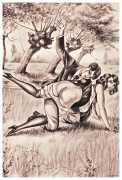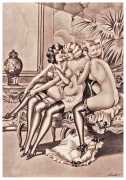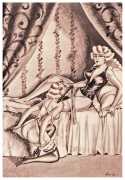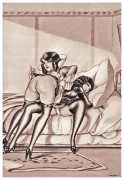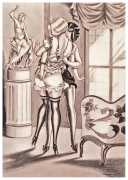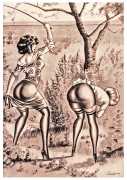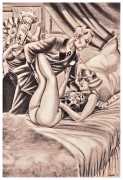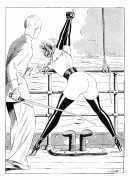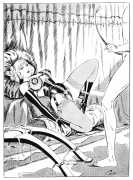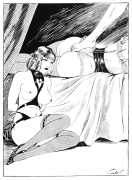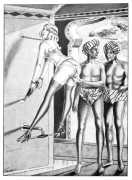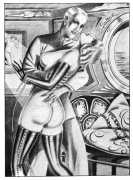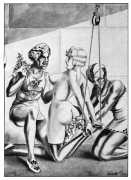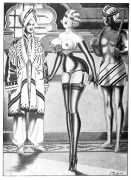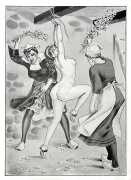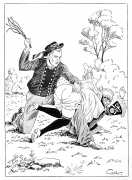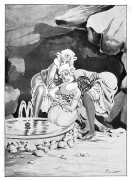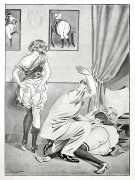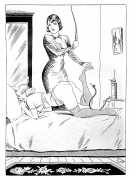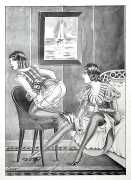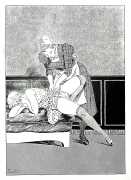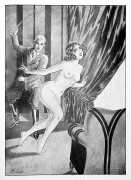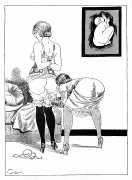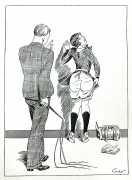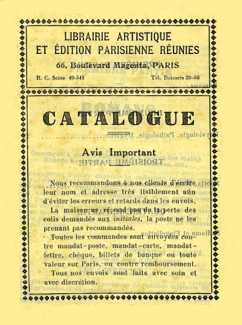 Number 66 rue de Magenta, just a stones-throw from Paris’s major railway termini at Gare du Nord and Gare de l’Est, is now a money exchange and travel agency, but in the 1920s and 30s its convenient location served a very different function. It was home to a bookshop and a collection of publishers well known to ‘discerning gentlemen’ partial to spanking fantasies, especially if the books were illustrated. Here the Librairie Artistique et Édition Parisienne Réunies, a collaboration started around 1922 by veteran publisher Paul Brenet between his Éditions P. Brenet, the Librairie Artistique and the Édition Parisienne, built a catalogue of some 250 titles. The list included novels (mostly erotic), health (mostly ‘sex education’), sport, the occult, and the largest collection of ‘sadisme et flagellation’ ever produced.
Number 66 rue de Magenta, just a stones-throw from Paris’s major railway termini at Gare du Nord and Gare de l’Est, is now a money exchange and travel agency, but in the 1920s and 30s its convenient location served a very different function. It was home to a bookshop and a collection of publishers well known to ‘discerning gentlemen’ partial to spanking fantasies, especially if the books were illustrated. Here the Librairie Artistique et Édition Parisienne Réunies, a collaboration started around 1922 by veteran publisher Paul Brenet between his Éditions P. Brenet, the Librairie Artistique and the Édition Parisienne, built a catalogue of some 250 titles. The list included novels (mostly erotic), health (mostly ‘sex education’), sport, the occult, and the largest collection of ‘sadisme et flagellation’ ever produced.
The authors of titles like Brûlants plaisirs (Burning Pleasures) and Le dominateur (The Dominator) used pseudonyms, often with suggestive names such as Désiré van Rowel and Aimé van Rod. Their true identities are unknown, though it is believed that author René-Michel Desergy and science fiction writer Maurice Renard supplemented their incomes this way. Most of the narratives are rather boringly similar, often involving girls’ schools, cruel dominatrixes, kidnappings, and lots and lots of spanking, whips and humiliation. Interestingly they almost never include actual sex, which is the main reason why the establishment at 66 rue de Magenta survived for so long without intervention by the authorities.
Like the narratives, the illustrations accompanying the texts never depicted intimate sexual activity, not even genitals, which required a certain style of illustration emphasising bare bottoms (acceptable), bare breasts (just acceptable), and as much humiliation and torture as the imagination could conceive. The illustrator who was able to make the most of the (pardon the pun) bottomless demand for such imagery was Carlo.
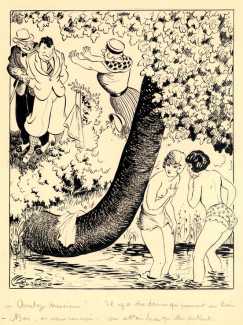
Given his popularity and collectability, very little is known about Carlo. From the similarity of styles, it is almost certain that a number of cartoons from the late 1920s signed ‘Charléno’ are by the same hand; cartoon historian Philippe Benoist has identified several of them, and one or two fairly crude paintings from the period also bear a ‘Charléno’ signature. ‘Charléno’ cartoons appeared occasionally in the satirical magazine L’Humour, and an artist of the same name exhibited in the Salon des Humoristes in 1912 and 1914. It has been suggested that the pseudonym hides an artist by the name of Charles Hénaut or Hénault, but there is no record of any such artist.
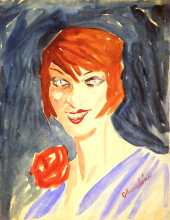
Carlo, nearly always signing his trademark images ‘Carlo’ or just ‘C’, burst onto the scene in 1931, producing illustrations for five Librairie Générale titles by Alan Mac Clyde and Edith Kindler (probably all actually by Maurice Renard). By the end of 1936, when the last Carlo-illustrated title appeared, he had produced around three hundred drawings for at least thirty titles, mostly for the Librairie Artistique et Édition Parisienne Réunies, but also for the Librairie Générale and for Jean Fort’s Collection des Orties Blanches.
It is hard now to understand the attraction of Carlo’s characterless women with their impossibly small feet, impossibly high heels, impossibly narrow waists and impossible poses. Maybe it was just that – Carlo’s women are decidedly male-fantasy women, unrelated to the world of real intimacy. Whoever Carlo was, and it has been strongly suggested that ‘Carlo’ was actually more than one artist working to an easy-to-duplicate template, they were not actually a very good illustrator. The line work is crude, the backgrounds sketchy, the faces mostly expressionless.
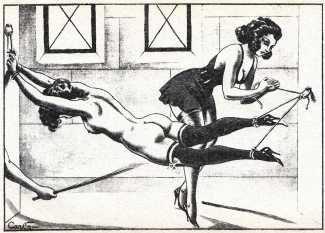 Yet there is no doubt that Carlo was immensely popular in that short interwar period when Parisian clandestine publishing flourished, and there are aspects of his work which still attract attention. Maybe it’s the inventiveness of his impossible torture machines, the grotesque humour of his ‘training regimes’, the breadth of his perverse imagination, even his graphic naivety itself.
Yet there is no doubt that Carlo was immensely popular in that short interwar period when Parisian clandestine publishing flourished, and there are aspects of his work which still attract attention. Maybe it’s the inventiveness of his impossible torture machines, the grotesque humour of his ‘training regimes’, the breadth of his perverse imagination, even his graphic naivety itself.
The publications of the Librairie Artistique et Édition Parisienne Réunies and their kindred were printed in small editions, mostly on poor-quality paper, which is one reason why Carlo’s simple easy-to-reproduce drawings were in demand by publishers. Most included a mixture of line drawings and monochrome shaded illustrations, and image selections sometimes varied across different printings; indeed, there are times when an approximately-appropriate plate from one title was reused in a later title; not hard when so many had almost-identical story lines.
Titles known to include Carlo illustrations
Alan Mac Clyde, Bagne de femmes, Librairie Générale, 1931
Alan Mac Clyde, Dressage, Librairie Générale, 1931
Alan Mac Clyde, La madone du cuir verni, Librairie Générale, 1932
Edith Kindler, Esclavage, ou L’agonie sous le fouet, Librairie Générale, 1932
Edith Kindler, La reine cravache, Librairie Générale, 1932
Allan Kardy, Les deux Camille, Librairie Artistique et Édition Parisienne Réunies, 1933
Juana Lapaz, L’inquisiteur moderne, Librairie Artistique et Édition Parisienne Réunies, 1933
Aimé van Rod, Le dominateur, Librairie Artistique et Édition Parisienne Réunies, 1933
Désiré van Rowel, L’internat des châtiments, Librairie Artistique et Édition Parisienne Réunies, 1933
Dr Caufeynon, Avant. Pendant. Après, Librairie Artistique, 1934
Dr Caufeynon, Le mariage et son hygiène, Librairie Artistique, 1934
L.N. Dangtal, Caprices sexuels, Librairie Artistique et Édition Parisienne Réunies, 1934
Alan Mac Clyde, Le cuir triomphant, Librairie Générale, 1934
Alan Mac Clyde, Despotisme féminin, Librairie Générale, 1934
Alan Mac Clyde, Dolorès Amazone, Librairie Générale, 1934
Alan Mac Clyde, Servitude, Librairie Générale, 1934
Juana Lapaz, Sévérités perverses, Librairie Artistique et Édition Parisienne Réunies, 1934
Désiré van Rowel, Le château des cuisants souvenirs, Librairie Artistique et Édition Parisienne Réunies, 1934
Désiré van Rowel, Cinglantes épreuves, Librairie Artistique et Édition Parisienne Réunies, 1934
René-Michel Desergy/Désiré van Rowel, Joues cramoisies, Collection des Orties Blanches and Librairie Artistique et Édition Parisienne Réunies, 1935
René-Michel Desergy, Les tyrans passionnels, Librairie Artistique et Édition Parisienne Réunies, 1935
Désiré van Rowel, Brûlants plaisirs, Librairie Artistique et Édition Parisienne Réunies, 1935
Désiré van Rowel, Joues cramoisies, Librairie Artistique et Édition Parisienne Réunies, 1935
René-Michel Desergy, La guinguette aux orties, Librairie Artistique et Édition Parisienne Réunies, 1936
René-Michel Desergy, À toute volée, Librairie Artistique et Édition Parisienne Réunies, 1936
Alan Mac Clyde, Dolly, esclave, Librairie Artistique et Édition Parisienne Réunies, 1936
Alan Mac Clyde, La madone du cuir verni, Librairie Artistique et Édition Parisienne Réunies, 1936


